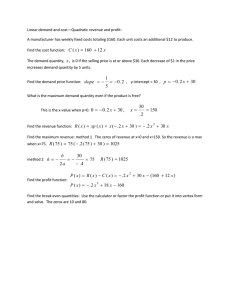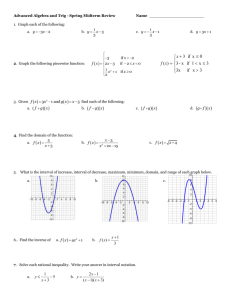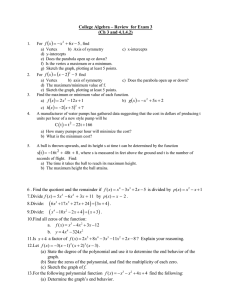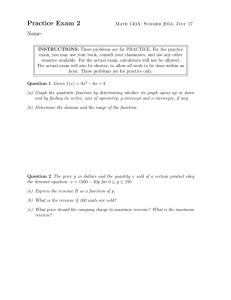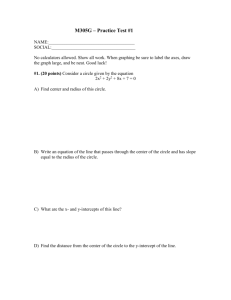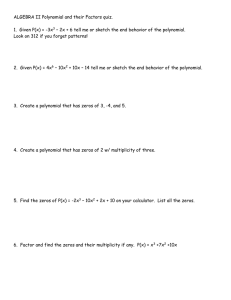x-intercepts, zeros and roots of polynomial functions
advertisement
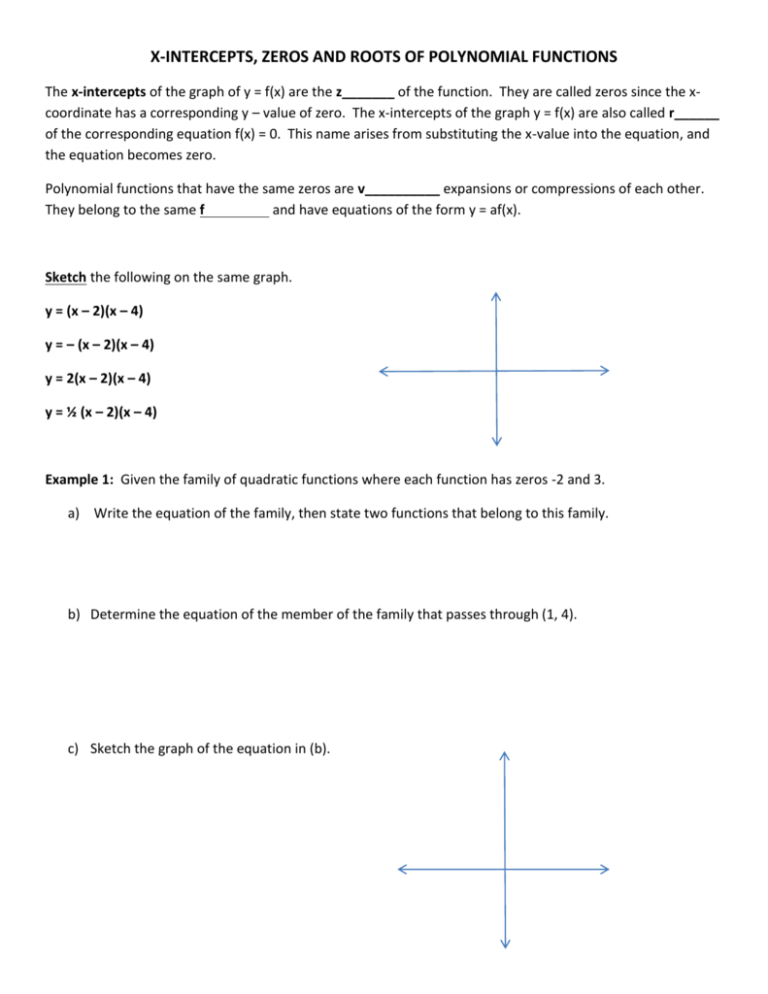
X-INTERCEPTS, ZEROS AND ROOTS OF POLYNOMIAL FUNCTIONS The x-intercepts of the graph of y = f(x) are the z_______ of the function. They are called zeros since the xcoordinate has a corresponding y – value of zero. The x-intercepts of the graph y = f(x) are also called r______ of the corresponding equation f(x) = 0. This name arises from substituting the x-value into the equation, and the equation becomes zero. Polynomial functions that have the same zeros are v__________ expansions or compressions of each other. They belong to the same f and have equations of the form y = af(x). Sketch the following on the same graph. y = (x – 2)(x – 4) y = – (x – 2)(x – 4) y = 2(x – 2)(x – 4) y = ½ (x – 2)(x – 4) Example 1: Given the family of quadratic functions where each function has zeros -2 and 3. a) Write the equation of the family, then state two functions that belong to this family. b) Determine the equation of the member of the family that passes through (1, 4). c) Sketch the graph of the equation in (b). Example 2: Determine the equation of the family of each polynomial function. y y y x x y= x y= y= How do we identify the particular member of each family of curves represented above? Example 3: Determine the equation of the function with zeros -2, -1, and 3, and y-intercept 12. Sketch a graph of the function. Example 4: Determine the equation of the function with zeros 3 and -1 of order 2 and passes through (1, 4). Sketch a graph of the function.


